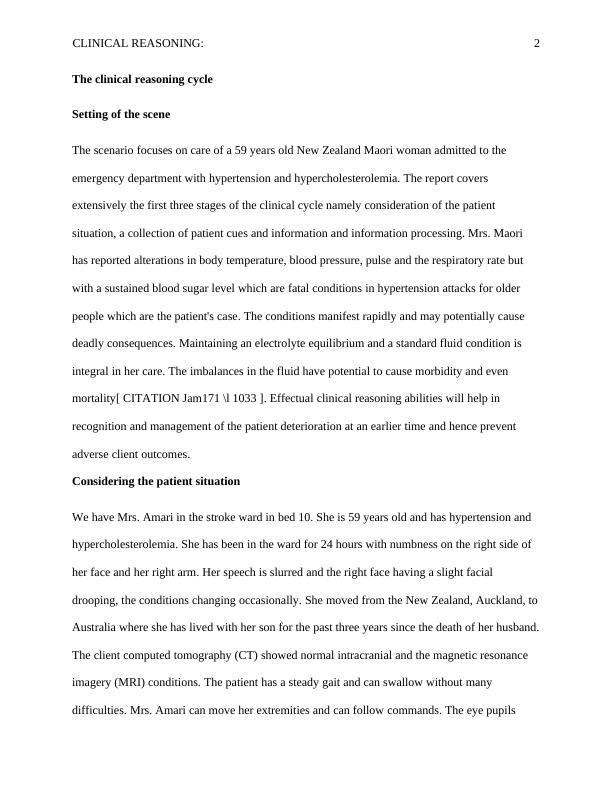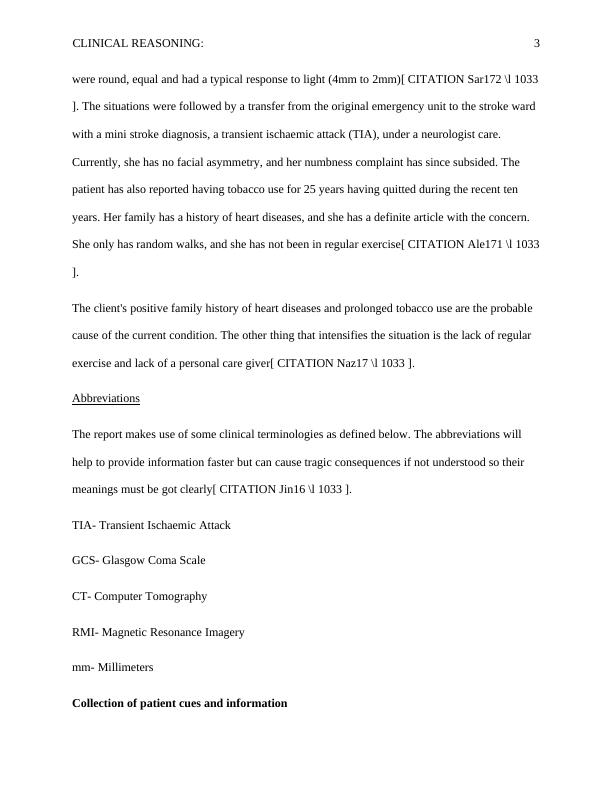NRSG366 - Clinical Reasoning Cycle Report
9 Pages1368 Words53 Views
Australian Catholic University
Clinical Reasoning Cycle (NRSG366)
Added on 2020-03-04
About This Document
The scenario focuses on the care of a 59 years old New Zealand Maori woman admitted to the emergency department with hypertension and hypercholesterolemia. The report covers extensively the first three stages of the clinical cycle namely consideration of the patient situation, a collection of patient cues and information and information processing. It includes - setting of the scene, considering the patient situation and collection of patient cues and information.
NRSG366 - Clinical Reasoning Cycle Report
Australian Catholic University
Clinical Reasoning Cycle (NRSG366)
Added on 2020-03-04
ShareRelated Documents
End of preview
Want to access all the pages? Upload your documents or become a member.
CNA 155 Clinical Reasoning Report
|7
|1839
|361
Clinical Reasoning: A Case Study on Transient Ischemic Attack
|3
|1473
|224
Clinical Reasoning Cycle Case Study
|9
|2351
|223
CAA500 | Clinical Reasoning - Case study
|12
|2789
|75
CNA155 - Clinical Reasoning Report
|10
|2400
|456
Issues Faced by People with Dementia and Role of Dementia Australia in Addressing Them: A Case Study Analysis
|11
|3135
|226



